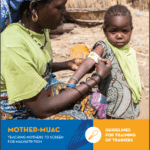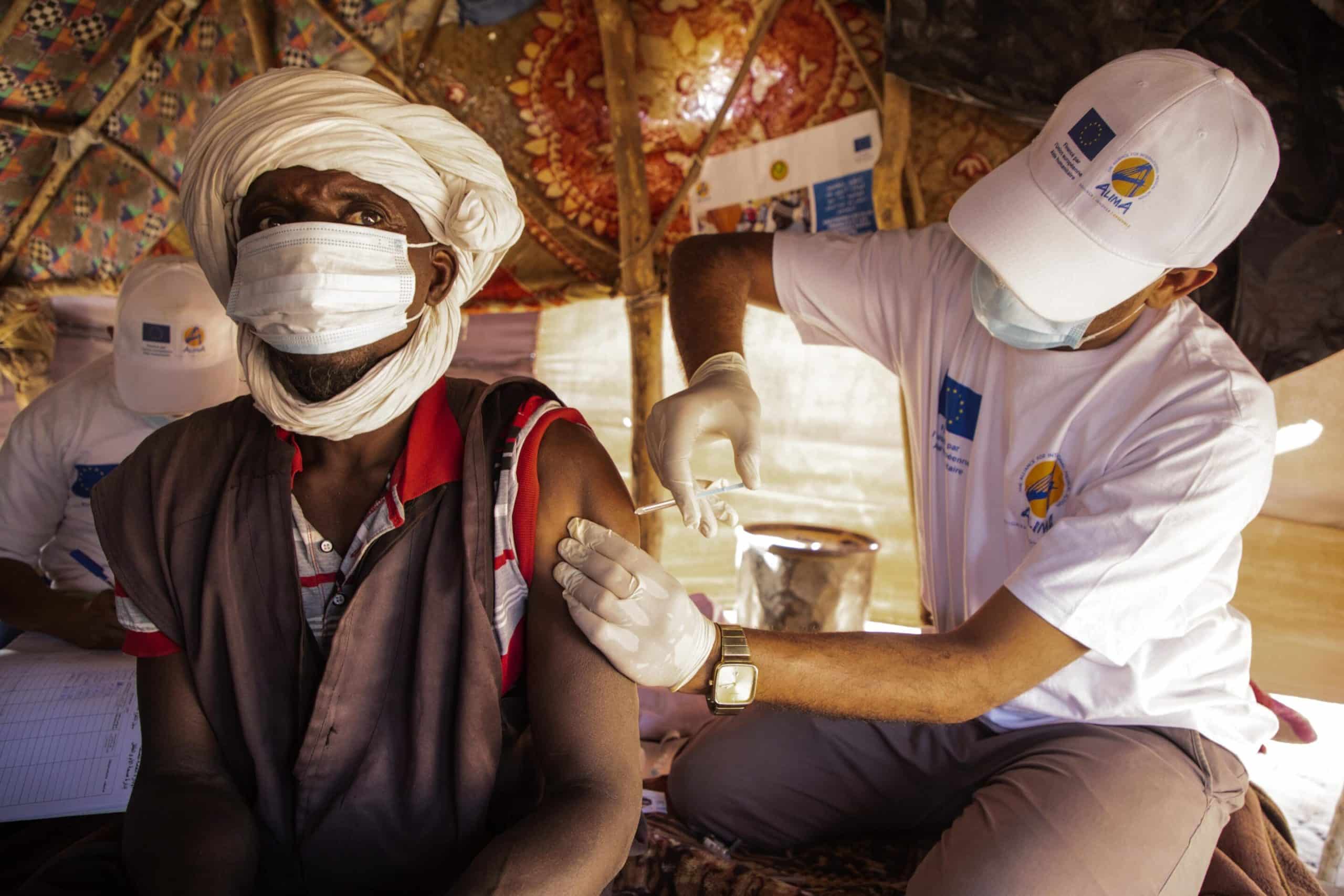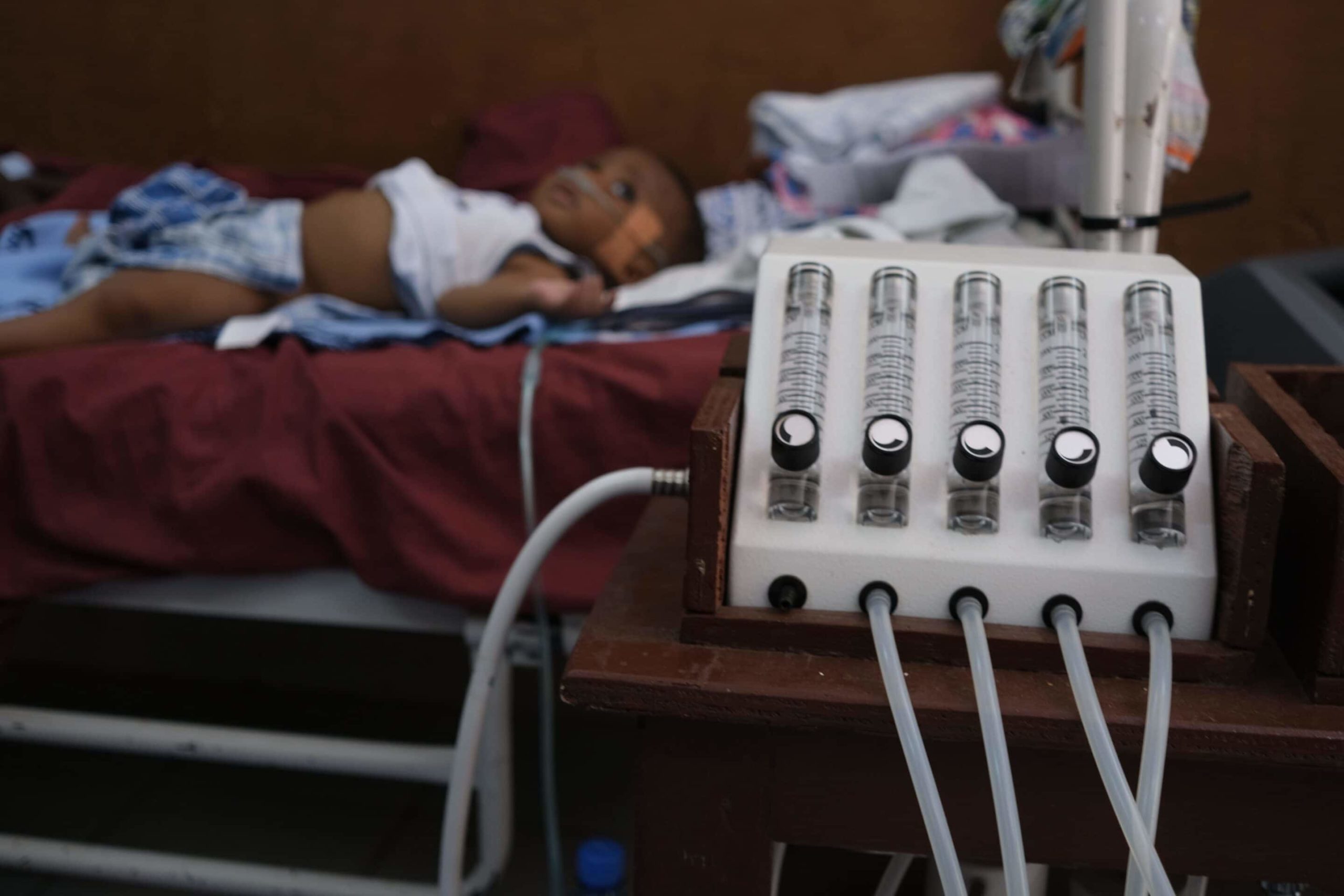“Malnutrition among children is an emergency every year and disruptions from COVID-19 are making a bad situation worse,” explains Kevin Phelan, Nutrition Advisor for ALIMA.
Since the arrival of COVID-19 in Africa, mass screening campaigns for malnutrition were cancelled to avoid large gatherings and to respect barrier measures. Many health centers lacked the capacity to go door-to-door to screen children individually, and families were reluctant to come to health centers for fear of being infected with the coronavirus – something observed from the very beginning of the pandemic. For these reasons, these simple-to-use, tri-colored MUAC bracelets proved to be vital in identifying malnourished children.
“Often afraid or unable to bring their children to a health center, due to the risk of contracting COVID-19, more and more mothers are relying on these bracelets to regularly screen their children for malnutrition, from the safety of their home,” says Dr. Ibrahim Kadian Diallo, program manager for ALIMA.
Only if the bracelet, which measures the child’s Mid-Upper Arm Circumference (MUAC), shows yellow or red, signifying a state of moderate or severe acute malnutrition, do parents need to go to a health center to get malnutrition treatment for their child.
Download the guideline for implementing mother -MUAC
A Double Crisis
Despite a 38% decrease in the number of patients coming to ALIMA-supported health centers in 2020 compared to 2019, medical teams recorded, in many of our countries of intervention, an increased number of children arriving at health centers malnourished, both moderately and severely. In Niger, for example, the rate of moderate malnutrition in ambulatory nutrition units has increased by 30% in some regions.
This is likely due to secondary effects of the pandemic, which has globally increased levels of food insecurity, following market closures and a loss or reduction of normal household income. Even in areas where markets remain open, many families are no longer able to afford nutritious foods, or have been forced to limit meal rations.
“COVID-19 has unquestionably exacerbated the precariousness of populations, especially the most vulnerable throughout the world,” says Dr. Moumouni Kinda, ALIMA’s Director of Operations. “The pandemic response has also put added burdens on health workers.”
In addition to an overall decrease in health promotion activities in communities, including awareness and health education campaigns, as well as vaccinations, border closures and disruptions to supply chains have caused delays and interruptions in the delivery of essential medical supplies and medications. This makes the treatment of malnourished children in remote areas even more challenging. Sometimes there’s just not enough ready-to-use therapeutic foods to give to children suffering from malnutrition.
“There is a very high number of children currently suffering from severe acute malnutrition, but local health structures have a limited capacity to screen them and sometimes a lack of adequate treatment quantities to care for them,” said Dr. Oumarou Maidadji, program manager for ALIMA. “This creates an urgent need to further implement simple and effective approaches, such as MUAC for Mothers, to identify these children at the earliest stages possible, when it is less expensive and easier to treat them.”
A Proven Approach
Pioneered by ALIMA and its Nigerien partner BEFEN (Well-being of Women and Children in Niger) in the Zinder region of Niger in 2011, MUAC for Mothers is an innovative, evidence-based approach that shows great promise in terms of scaling up screening in hard-to-reach places.
A first study, in 2013, showed that mothers were as effective as health workers in detecting malnutrition in their children. A larger, follow-up study compared the MUAC for Mothers strategy with the current screening strategy, which relies on community health workers to detect malnourished children. In this health zone, where 13,000 mothers were taught how to use MUAC, their children thus arrived for treatment at health centers earlier, and required far fewer hospitalisations than children health zones where community health workers periodically screened them.
“I am so thankful that ALIMA taught me to measure my child’s arm,” says Fatima Modu, who lives in the Muna camp for internally displaced persons, in Nigeria’s Borno State. “I have the bracelet with me everyday, and I can use it at home to measure my child’s arm, which is especially useful during this COVID period.”
To date, ALIMA and its local NGO partners have trained more than 4 million mothers across sub-Saharan Africa to use the MUAC bracelet.
This approach is now implemented in 26 countries around the world, by 12 organisations, including UNICEF and the World Food Programme.
——————–
Cover photo: © Seyba Keita / ALIMA




